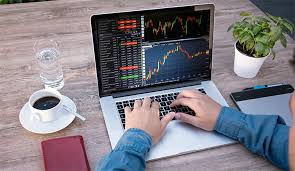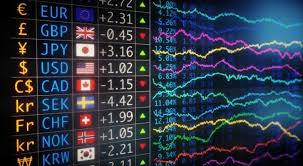
Forex trading time is a crucial aspect of the foreign exchange market that every trader should understand. The forex market operates 24 hours a day, five days a week, providing ample opportunities for traders to profit. However, not all trading hours are equal, and understanding the best times to trade can significantly influence your success. In this article, we will delve into the various trading sessions, their characteristics, and strategies to maximize your trading potential. For traders looking for a reliable platform, you can check out forex trading time Trading Broker KH, which offers valuable resources and tools to enhance your trading experience.
1. The Structure of Forex Trading Time
The forex market is divided into four major trading sessions, corresponding to the major financial centers around the world: Sydney, Tokyo, London, and New York. Each session has its characteristics and tends to present varying levels of volatility, liquidity, and opportunities. The market opens on Sunday evening (GMT) and closes on Friday evening, with trading occurring in a continuous loop around the globe.
1.1 Sydney Session
The Sydney session kicks off the forex trading week. It begins at 10 PM GMT on Sunday and runs until 7 AM GMT. Although this session has lower trading volume compared to others, it can present unique trading opportunities, especially for pairs involving the Australian dollar and New Zealand dollar. The market tends to be quieter, making it a good time for new traders to hone their strategies without excessive volatility.
1.2 Tokyo Session
The Tokyo session starts at 12 AM GMT and ends at 9 AM GMT. This session is notable for its significant activity in the Asian currency markets. Traders often engage extensively in the yen, and the volatility may increase as major economic news and data releases from Japan are often scheduled during this time. The Tokyo session is also essential for those looking to trade pairs that include Asian currencies.
1.3 London Session
Opening at 8 AM GMT and closing at 5 PM GMT, the London session is the most critical trading session due to its high volume and volatility. The market sees significant activity here, as this session overlaps with both the Sydney and New York sessions. During this time, important economic data is often released, making it an opportune time for traders to engage in trades. Pairs involving the euro, GBP, and CHF tend to be more active during this period.
1.4 New York Session
The New York session runs from 1 PM GMT to 10 PM GMT and is characterized by significant overlap with the London session. This overlap creates greater trading opportunities as firms and banks executing transactions drive up liquidity. The US dollar is heavily traded during this period, influencing a wide variety of currency pairs. Economic data releases from the US often lead to increased volatility, providing good prospects for day traders.
2. Understanding the Overlaps
One of the most critical aspects of forex trading time is the concept of session overlaps. The overlap between the London and New York sessions is particularly noteworthy, as it is when both sessions are active simultaneously. This overlap results in surges in trading volume, increased liquidity, and heightened volatility.

For traders, this is an excellent opportunity to capture significant price movements. It is also important to consider the economic calendar during these times, as major economic reports are frequently released, leading to sudden shifts in price.
3. Trading Strategies Based on Time
Successful forex trading requires not only understanding when to trade but also how to adapt your strategies according to market conditions. Here are some popular trading strategies based on forex trading time:
3.1 Scalping
Scalping is a trading strategy that involves making quick trades to profit from small price changes. This strategy is best utilized during the London and New York sessions when market volatility is higher. Traders executing scalping strategies will look for rapid price movements, capitalizing on small gains throughout the day.
3.2 Day Trading
Day trading involves opening and closing trades within the same trading day. This strategy requires traders to be active during the most volatile periods, which usually occur during the London and New York overlaps. Day traders must also keep a close watch on economic releases that can affect prices during these sessions.
3.3 Swing Trading
Swing trading is a longer-term strategy that involves holding trades for several days to capture larger price movements. Traders using this strategy can take advantage of all trading sessions but should be particularly vigilant during significant overlaps or economic announcements. A well-planned swing trading strategy can yield substantial profits when executed correctly.
4. Tips for Trading Based on Time
To maximize your forex trading experience, consider the following tips:
- Choose Your Trading Session: Understand which trading sessions align with your trading style and risk tolerance. This decision will shape your trading strategy and the pairs you choose to trade.
- Monitor Economic News: Stay informed about key economic releases and central bank announcements. These events can greatly affect trading conditions and should influence your trading decisions.
- Use a Good Trading Platform: Selecting the right broker and trading platform can enhance your trading experience. Look for platforms that provide robust tools, educational resources, and reliable customer service.
- Experiment with Strategies: Don’t hesitate to test different trading strategies and see which suit your trading style best. Use a demo account to practice before applying them in live market conditions.
Conclusion
In conclusion, understanding forex trading time is essential for traders who want to maximize their profitability. By familiarizing yourself with the four major trading sessions, knowing when to trade, and adapting your strategies accordingly, you can significantly improve your chances of success in the dynamic forex market. Remember to choose the right times to enter trades and continually educate yourself on market trends and economic indicators. Trading in the forex market can be rewarding, but it requires careful planning and informed decision-making.
